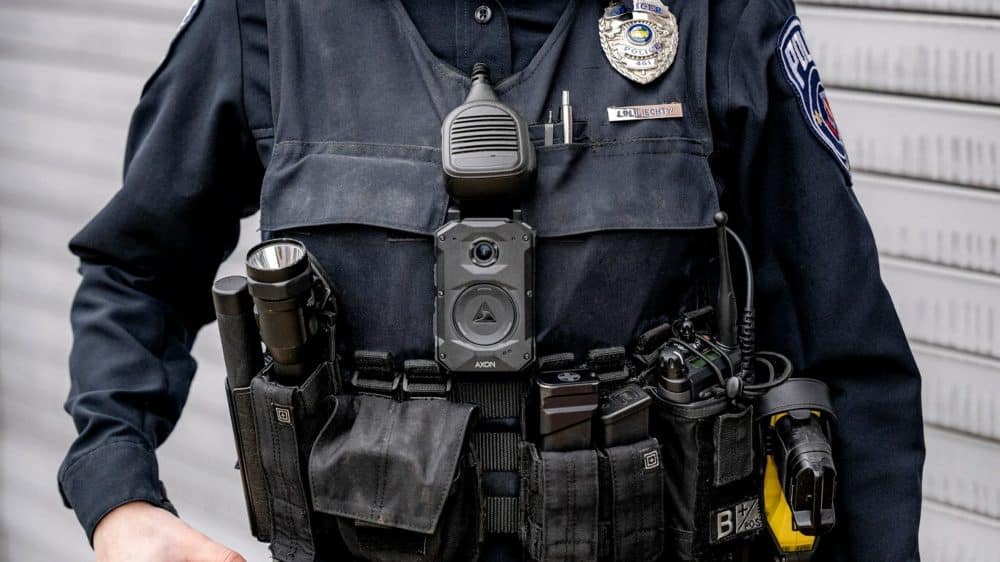Axon launches next-generation body-worn camera


Victoria Rees
Share this content
Axon, a provider of technology that improves public safety, has announced the introduction of its newest body-worn camera, Axon Body 4.
Key upgrades
“Axon Body 4’s advanced features are a giant leap forward for handling an incident safely in real-time,” said Rick Smith, Founder and CEO of Axon. “Axon Body 4 provides far more than just a camera. It has the ability to be a communications beacon. We believe this will be a powerful tool in public safety and security that can unlock new levels of transparency, flexibility, increased situational awareness and real-time support. This device sits at the core of equipping agencies so they never miss a moment.”
Barriers of communication
According to Axon, in situations where public safety is at risk, real-time visibility into unfolding events and timely support are crucial. Livestreaming has been a tactical advantage in these instances, providing additional eyes on scene. However, communication to officers from supervisors and dispatchers has historically been over the radio, and out of sync with the video and audio of the livestream.
The new camera enables public safety and their support teams to communicate with one another in real-time, combining seamless video livestreaming with new bi-directional audio. This capability is immensely helpful when additional assistance is needed from dispatchers, supervisors, translators, mental health experts or anyone who can offer aid in a unique situation. Support teams off scene can watch the livestream and communicate directly through the officer’s Axon Body 4, providing real-time support to the officer, while preserving radio bandwidth for other demands.
A new Watch Me button empowers officers to signal for an additional set of eyes to watch their back when responding to calls. When an officer presses this button, Axon Respond users receive a notification within moments so they can immediately support the officer. This enables supervisors and dispatchers to prioritize which officers can most benefit from additional support.
Similar to Axon Body 3, location can be shown on the Axon Respond map in real-time and cameras can be configured to start recording automatically when an officer is assigned to or approaches the location of a high priority call for service. Critical alerts, such as the unholstering of a firearm, the arming of a TASER device and more can be configured to communicate via the body camera and display in Axon Respond. This further ensures that agencies never miss a critical moment.
Enhanced features
Axon Body 4 also has a larger field of view of 160 degrees, or an 18% optional view increase from prior models. It also includes a stronger 5 MP sensor enabling sharper detail and higher resolution footage. These upgrades can help capture more of the situation with better quality.
Officers also no longer need to decide between using chest mounted cameras or flexible POV modules, as the Axon Body 4 has the option to add on a quick connecting POV camera with the Flex POV module. This provides viewing at multiple angles, including on tactical eyewear to view at sight level or on a lapel for an additional angle. The POV module can also capture unique perspectives in hand for viewing around corners or underneath vehicles and can livestream to Axon Respond.
Full-shift connected camera
The new camera also provides improved battery life, providing a 13+ hour runtime that Axon says makes it reliable for a full-shift, without compromise, even with real-time services running. The new camera also provides rapid charge capabilities with magnetic quick-disconnect. The device is able to add over 20% battery charge in under 30 minutes, making it simpler for the user to recharge in the car while on duty.
SJA opinion
The Axon Body 4 has both new features and enhanced features that set it apart from previous models.
In potential high-risk scenarios, where outcomes are uncertain, knowing that officers can rely more effectively on other team members to locate them or speak to those who require aid, could be the key to resolving more difficult situations.
Additionally, helpful features such as longer battery life and better image quality can help officers to carry out their jobs more effectively, which is crucial to improving public safety.


